Taking risks while playing
4 August 2021
At Treetops we believe that it is important for all tamariki to engage in safe, guided and closely supervised risky play opportunities - let us tell you why.
Risky play is an important part of children’s learning and development. However often the adults in a child’s life will try to avoid aspects of risk for their children, including during play. While this keeps our precious tamariki safe from hazards and dangers, it also limits their opportunities to assess risk and take risks in a safe and supported environment.
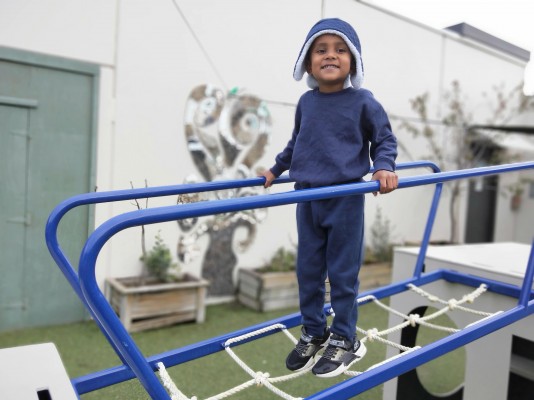
Children do not see risky play as different from any other kind of play; it’s just another way that they can challenge themselves and test their abilities and strengths. The term ‘risk-taking’ is often seen as negative, that children are exposed to something dangerous or hazardous (Little, & Wyver, 2008). However, as Little and Wyver (2008) highlight, a hazard is “something the child does not see” (p. 37) and risk “relates to the child’s uncertainty about being able to achieve the desired outcome” (p. 37).
In risky play, adults often see and can work to eliminate the hazards, providing the child with the opportunity to safely choose whether to take the risk, or not. The label ‘risky play’ is devised by adults who see it as a way that a child may hurt themselves and so it is deemed unsafe or dangerous. However, in taking this view we can lose sight of the important learning and development opportunities that risky play offers children. How else can we expect children to determine what is safe, if we don’t provide them with the opportunity to figure this out and experience it for themselves?
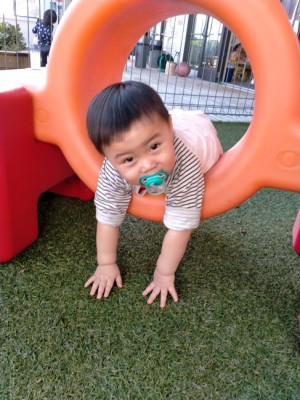
Risky play refers to play that “involves thrilling, exciting, physically challenging activities like climbing, jumping, balancing, or rough and tumble play, as well as hiding or seclusion from the constant surveillance of adults” (The Education Hub, 2019).
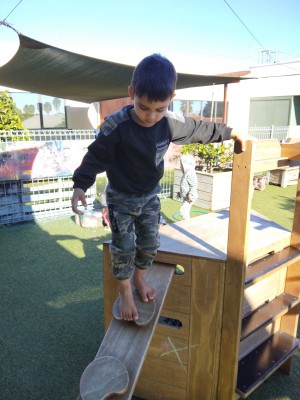
According to Sandseter (2007) there are six different kinds of risky play, these are:
-
Play involving heights (falls risk).
-
Play involving speed (risk of collision).
-
Play involving dangerous tools (risk of injury).
-
Play that is near dangerous elements (risk of falling into or from something).
-
Rough and tumble play (risk of harming each other).
-
Play where children hide or cannot be seen by adults.
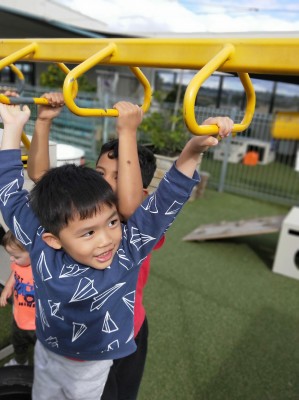
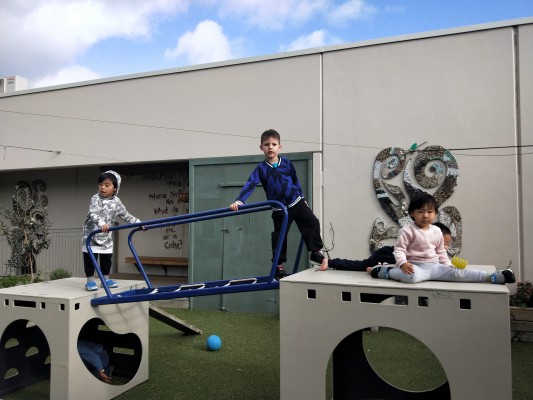
Each of these kinds of play involves a degree of risk, and therefore provides children with an opportunity to seek thrill, be excited or be physically challenged. While some adults see this as dangerous or hazardous, it is also what attracts children to this kind of play. Therefore it is important for teachers to be present, work to eliminate hazards, ensure the environment and all equipment is safe, and most importantly talk to children about assessing the risk before taking the risk (Little, & Wyver, 2008).
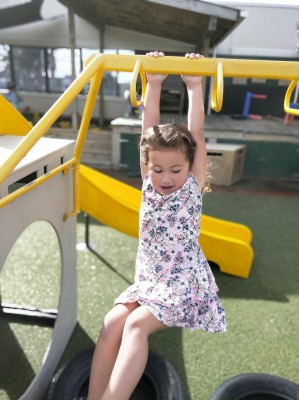
To maximise safety and learning, good teacher-to-child ratios are essential, and one of the many reasons why we have better than the required minimum teacher-to-child ratios at Treetops.
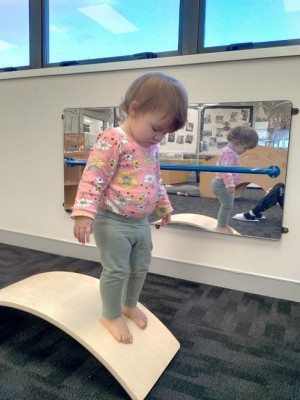
For older children, risky play includes all of the wonderful opportunities for children to swing across the monkey bars, climb on the playground, balance across a bridge, and jump off a climbing box. However, risky play can also be a part of younger children’s play, as toddlers can engage in opportunities to balance on a balance board, cross a bridge, and test their bodies ability to do different things. This kind of play is fun and provides children with many benefits including “cognitive, emotional, social and physical development, independence and autonomy” (Little, & Wyver, 2008, p. 37). However, the most important benefit for children from engaging in risky play is that they get the opportunity to learn to assess risk themselves, and can use this knowledge in future situations, therefore learning how to better keep themselves safe (Little, & Wyver, 2008).
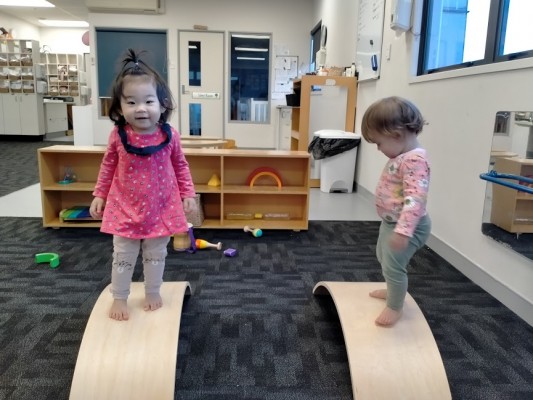
Our Early Childhood curriculum document - Te Whāriki (Ministry of Education, 2017) highlights the importance of children taking risks and gaining the knowledge that they need to keep themselves safe. Kaiako have an important role to play in this risk assessing and risk taking, providing opportunities for children to take risks in a supported environment and empowering children to take these risks through meaningful dialogue. Te Whāriki recognises and emphasises the competence and confidence that young children possess, and asks for kaiako to provide opportunities for children to show this, and risky play is a wonderful way for children to show just how much they are capable of doing.

So, next time you see your child balancing across a bridge, swinging on the monkey bars or jumping from the playground, stay close by, assess the hazards for yourself, think out loud and talk to your child about the possible hazards, and let your child know if or when you believe it is safe for them to take the risk. Let your child show you just how much they know about keeping themselves safe and just how much they can do with their body!
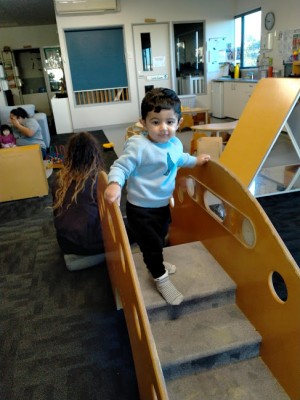
References:
Little, H., & Wyver, S. (2008). Outdoor play: Does avoiding the risks reduce the benefits? Australasian Journal of Early Childhood, 33(2), 33-40.
Ministry of Education. (2017). Te whāriki: He whāriki mātauranga mō ngā mokopuna o Aotearoa: Early childhood curriculum.
Sandseter, E. B. H. (2007). Categorising risky play—how can we identify risk‐taking in children's play? European Early Childhood Education Research Journal, 15(2), 237-252. https://doi.org/10.1080/13502930701321733
The Education Hub (2019). Promoting children’s risky play in outdoor learning environments. https://theeducationhub.org.nz/promoting-childrens-risky-play-in-outdoor-learning-environments/